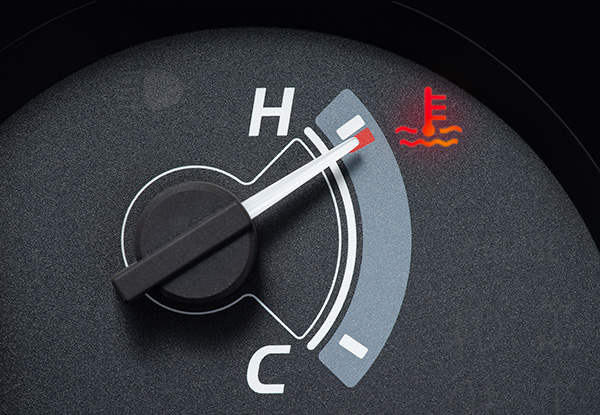
When your temperature gauge starts creeping into the red or steam rises from under the hood, it's a sign that something is wrong. While most drivers know that low coolant or a broken radiator can lead to overheating, some causes are less obvious but just as serious. These hidden issues can sneak up on you, especially if your car runs fine most of the time.
If your vehicle keeps running hotter than it should, even after topping off the coolant, you might be dealing with one of these five overlooked problems.
1. A Faulty Radiator Cap That Fails to Hold Pressure
The radiator cap does more than just keep coolant inside the system. It is a pressure-release valve that helps maintain the correct pressure in your cooling system. When the cap fails, it may allow coolant to boil at a lower temperature, leading to overheating even if the radiator and thermostat are functioning normally.
You might not notice a bad cap until you see coolant bubbling out of the overflow reservoir or smell something sweet after shutting off the engine. Swapping in a new cap is inexpensive and can sometimes solve stubborn overheating issues.
2. Air Pockets Trapped in the Cooling System
After a coolant flush or hose replacement, air can become trapped in the cooling system. These air pockets block coolant flow, especially around the thermostat or cylinder heads. The result is localized overheating that may not trigger an immediate warning light but still damages engine components over time.
A proper bleeding procedure can purge the air from the system, but not every vehicle makes it easy to do so. Some require special tools or procedures to ensure a full coolant purge. If your engine overheats right after recent service, this could be the culprit.
3. A Worn-Out Water Pump That Looks Fine on the Outside
The water pump is responsible for circulating coolant throughout the engine. While a leaking pump is an obvious issue, some pumps fail internally without any visible signs. The impeller inside the pump can wear down or break apart, especially in high-mileage vehicles, reducing coolant flow without causing an external leak.
Your engine may run hot during idling or low speeds, then cool off at highway speeds. That uneven temperature pattern is often a clue that coolant is not circulating properly.
4. A Restricted or Clogged Heater Core
The heater core is essentially a small radiator located inside your dashboard, and it plays a role in the overall cooling system. If it becomes clogged with old coolant or sediment, it can restrict flow and increase system pressure. While the heater core doesn’t cool the engine directly, a clogged one can throw off coolant balance and trap heat in the wrong areas.
You might also notice weak cabin heat or foggy windows that don't clear easily, which are symptoms of heater core issues. A flush may help, but in some cases, replacement is the only option.
5. An Engine Control System That Mismanages Cooling Fans
Today’s engines rely on computer-controlled electric cooling fans. These fans kick on when the engine reaches a certain temperature or when the air conditioning is running. If a sensor, relay, or the control module itself malfunctions, the fan may never turn on. This causes the engine to heat up rapidly, especially in stop-and-go traffic.
You may hear no fan noise when idling or notice that overheating occurs only in city driving. Testing the fan circuit and temperature sensors can reveal the issue.
Let our Technicians at Complete Automotive Repair Specialists in Cromwell, CT, Diagnose the Cause
Overheating is more than just an inconvenience. It can damage your engine and lead to costly repairs if ignored. At Complete Automotive Repair Specialists in Cromwell, CT, we take the time to diagnose the root cause of cooling problems, whether it’s a hidden air pocket, a worn-out pump, or something even less obvious.
If your vehicle is running hot more often than it should, bring it in for a cooling system check. Preventing an overheating event is always better than dealing with a blown head gasket or warped cylinder head.